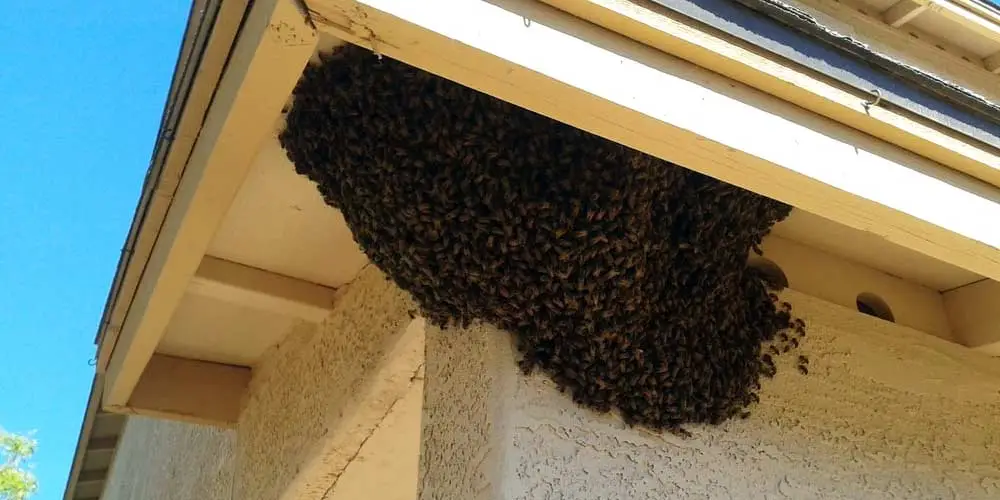
The Beehive, Bee Swarm Removal Service in Mesa, Phoenix, Scottsdale, Tempe, Chandler, Gilbert, Glendale. AZ. Valley Wide Service.
From early spring and throughout the fall, bees have a natural instinct to swarm — they leave their parent colony and set off to start another beehive. If people let us know about the bees soon enough, we can often catch the bees and use them on a honey farm or relocate the bees to the desert. Swarming is the process by which a new honey bee colony is formed when the queen bee leaves the colony with a large group of worker bees. In a prime swarm, about 60% of the worker bees leave the original hive location with the old queen. This swarm can contain thousands to tens of thousands of bees.
Swarming is mainly a spring phenomenon, usually within a two- or three-week period depending on the locale, but occasional swarms can happen throughout the producing season. Secondary after swarms may happen but are rare. After swarms are usually smaller and are accompanied by one or more virgin queens. Sometimes a beehive will swarm in succession until it is almost totally depleted of workers. Swarming is the natural means of reproduction of honey bee colonies. In the process of swarming the original single colony reproduces to two and sometimes more colonies.
Honeybees are an essential part of our agriculture, pollinating crops of all kinds. Approximately one third of our crops depend on bees for pollination. Bees also produce honey, bee’s wax, royal jelly and propolis. Some of these are used for health food and in cosmetics, soaps, candles and various other products. Because they’re so important, our trained technicians do their best to always catch and relocate bees whenever possible.
